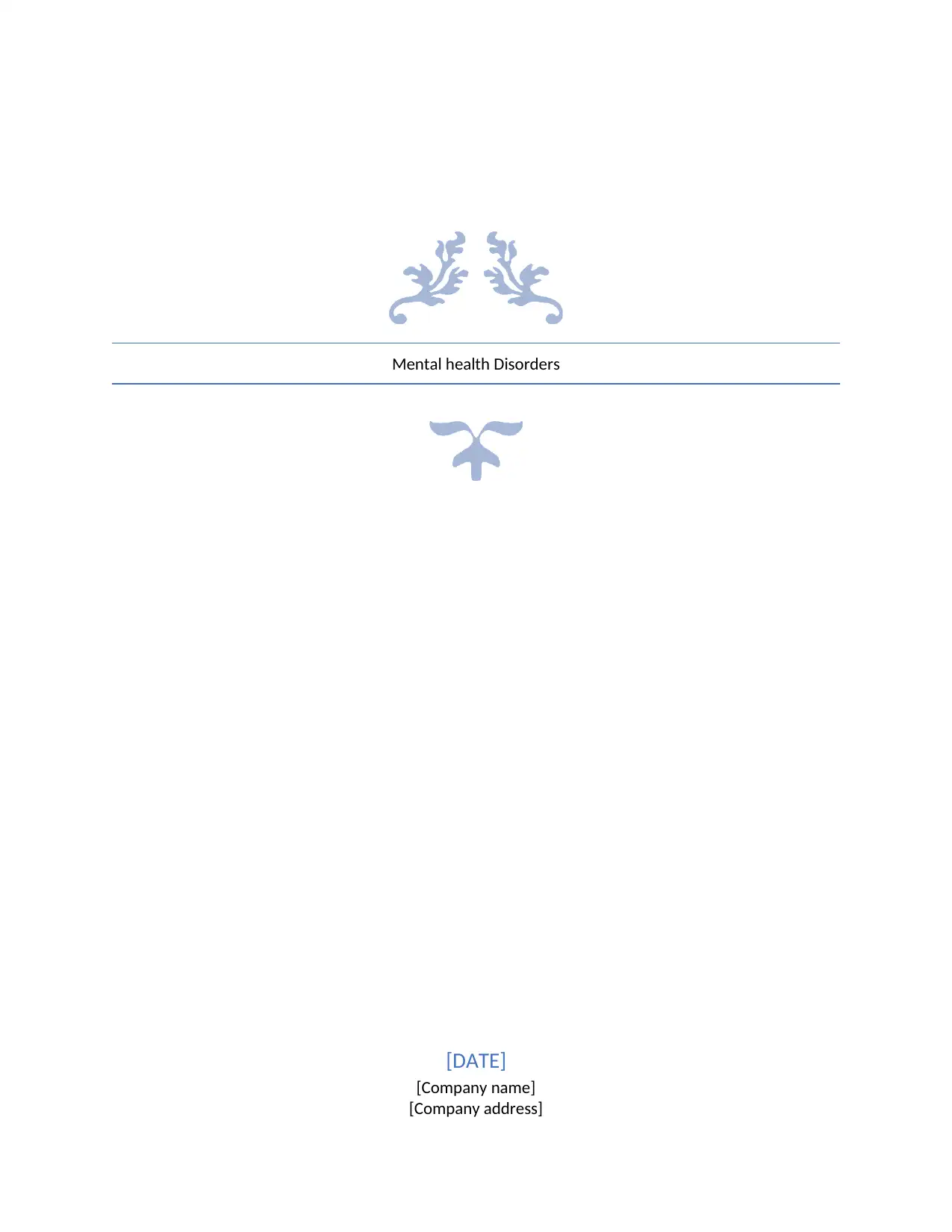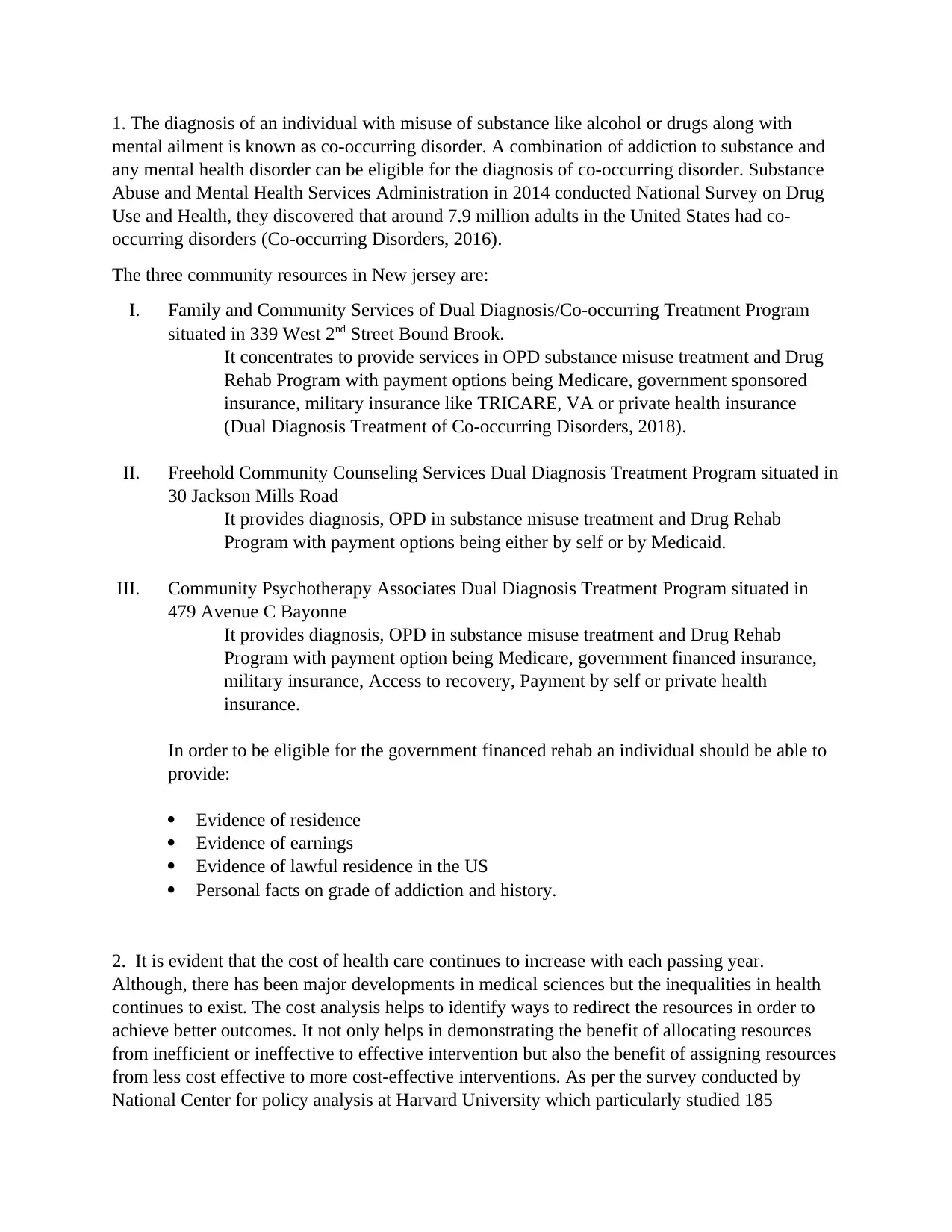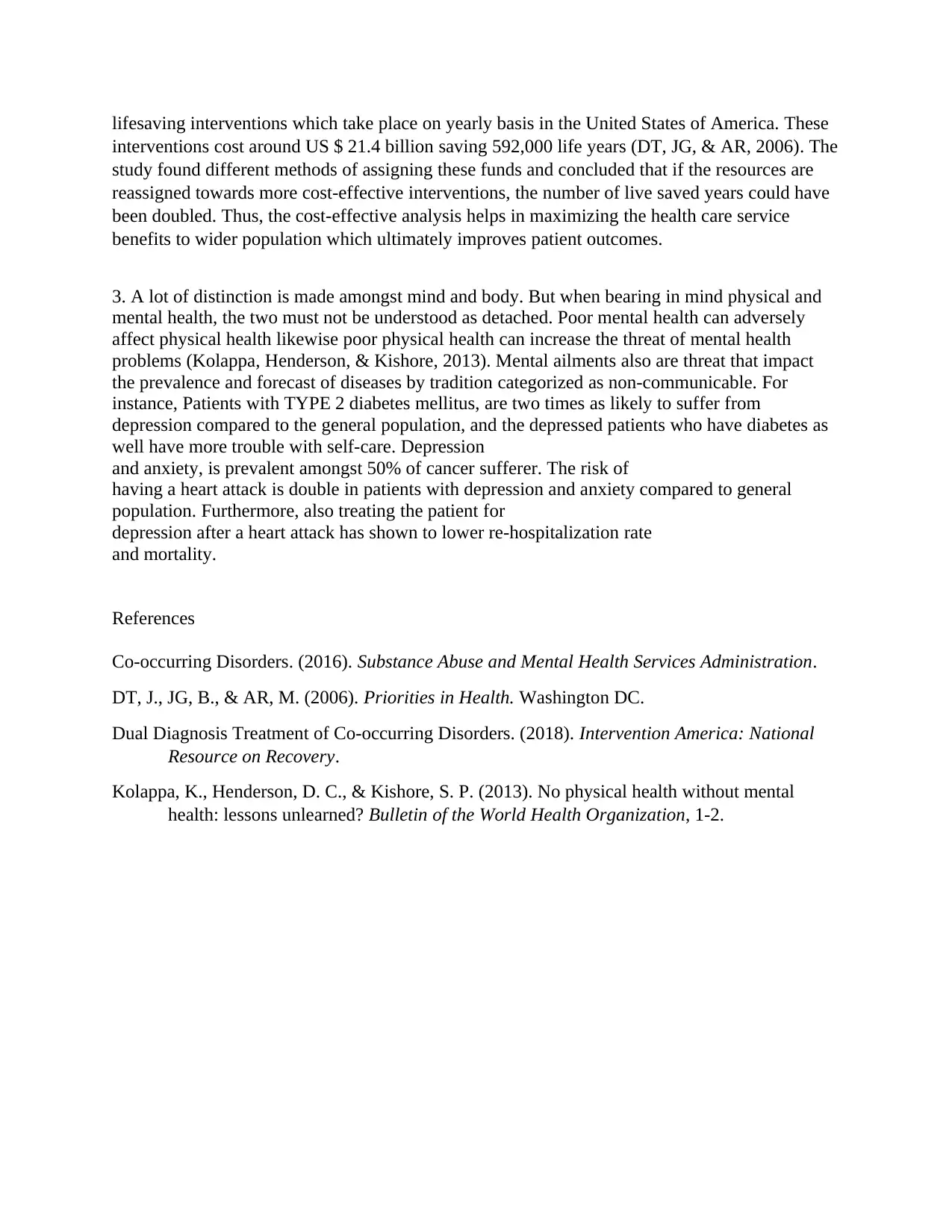Mental Health: Co-occurring Disorders and Cost Analysis
VerifiedAdded on 2023/06/10
|3
|782
|96
Report
AI Summary
This report addresses mental health disorders, specifically co-occurring disorders, which involve the combination of substance misuse and mental health ailments. It identifies three community resources in New Jersey offering dual diagnosis treatment programs, detailing their services and payment options. The report then explores the significance of cost analysis in healthcare, highlighting how it can improve patient outcomes by reallocating resources to more effective interventions, supported by a study from Harvard University. Finally, the report examines the interconnectedness of physical, emotional, and behavioral health, emphasizing how poor mental health can negatively impact physical health and vice versa, affecting the prevalence and prognosis of various diseases. References from SAMHSA, the World Health Organization, and others are included to support the findings.
1 out of 3









![[object Object]](/_next/static/media/star-bottom.7253800d.svg)